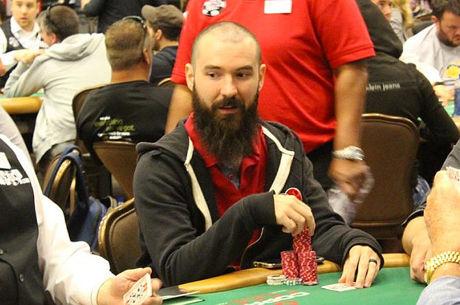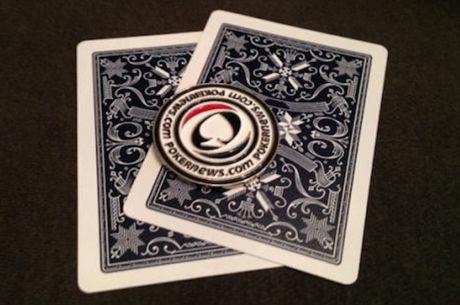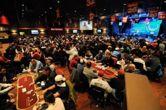Poker Coaching with Jonathan Little: Flopping Top and Bottom Pair

Here's a hand I played where I flopped top and bottom pair. Would you play it the same way? To find out, take this short quiz.
The answers are revealed below each question and ranked from 0 to 10 points. With each make your selection in the poll before scrolling down, then move down the page see how many points each answer is worth. So, if you're ready, let's get to it!
With blinds at 100/200, a loose, aggressive kid raises to 400 out of his 10,500 effective stack from first position and the player in second position folds. You are next to act and call with A?3?.
This is a situation where you should often consider folding due to your poor position and your opponent's likely strong range. But when the table is abnormally soft, the initial raiser is particularly bad, or someone yet to act is unlikely to three-bet without a premium hand, calling is an acceptable option with suited aces. Three-betting as a semi-bluff is also a possibility if the initial raiser will assume you must have a premium hand to three-bet.
After you call, a 50-year-old tight-aggressive player calls from the next seat, as does a splashy player in the hijack and an unknown player in the big blind, meaning six players see the flop come A?9?3?, giving you two pair. It checks around to you.
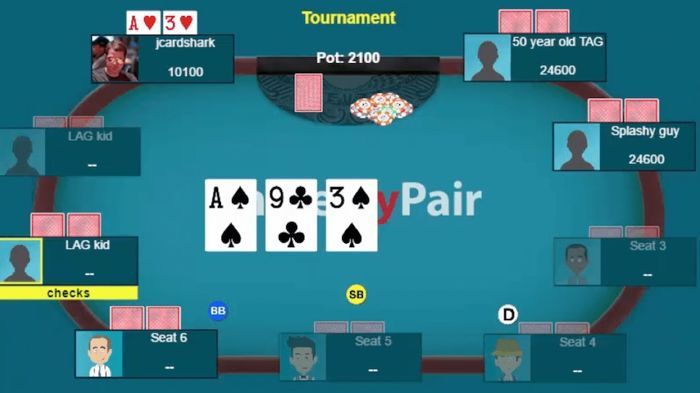
Answers to Question #1:
- Check = 2 pts.
- Bet 700 = 5 pts.
- Bet 1,300 = 10 pts.
- Bet 1,800 = 8 pts.
With your best made hands, you should almost always bet. This is an excellent spot to bet because if you are against an ace or a flush draw, a reasonable bet will usually get action. For that reason, you should make a sizable, but not abnormally large bet.
I am fine with both a 1,300 and 1,800 bet, but in general, I like to keep my flop bets "standard" in order to not tip my opponents off to the strength of my specific holding.
You bet 1,300 and only the splashy hijack calls. The turn is the 10?.
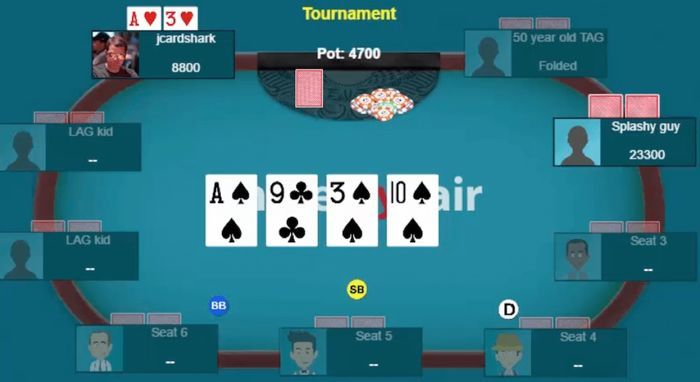
Answers to Question #2:
- Check = 10 pts.
- Bet 1,800 = 3 pts.
- Bet 2,400 = 2 pts.
- Bet 3,600 = 2 pts.
Any middle spade on the turn is particularly bad for you as it improves your opponent's flush draws, as well as some top pairs (Ax10x in this case). Especially when the pot starts multi-way, it is relatively easy to be against the obvious draws. When an obvious draw arrives, you should proceed with caution with your non-nut hands.
The only time you can profitably bet the turn is when you know your opponent will only raise when you are beat while also opting to call with all top pairs and marginal draws. Since many competent players will call a turn bet with their flushes, checking here is ideal.
You check and the splashy hijack bets 3,500.
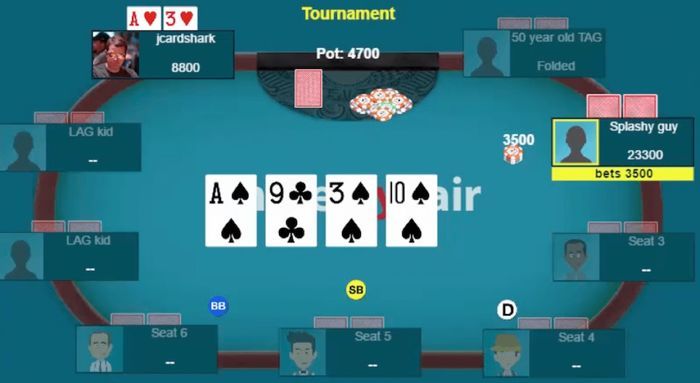
Answers to Question #3:
- Fold = 10 pts.
- Call 3,500 = 7 pts.
- Raise all in = 0 pts.
Given it is somewhat likely that your opponent would check behind with many of his marginal made hands like AxJx and primarily bet with his premium made hands and the few draws that have reasonable equity against your marginal made hands (there shouldn't be many in his range at this point), folding here is ideal.
Calling is somewhat optimistic unless you are confident your opponent will bet the turn with a wide range and then give up on the river (allowing you to fold to a river bet) or if you expect him mindlessly to bet the turn and river with all his junk, thinking that you will be unwilling to call a river all-in with your marginal made hands (allowing you to confidently call his river push). Against most players, though, you should fold to this turn bet.
You call. The river is 2?, making the final board A?9?3?10?2?.
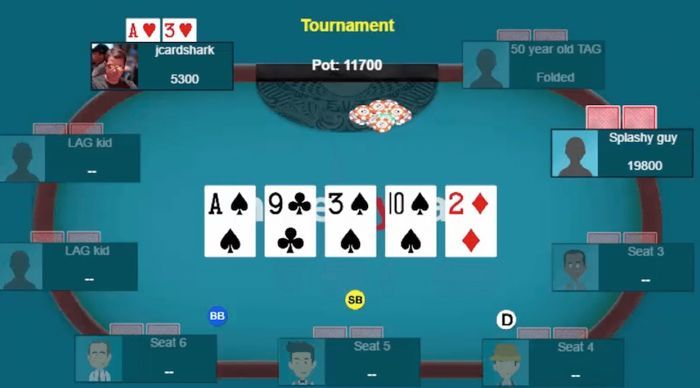
Answers to Question #4:
- Check = 10 pts.
- Go all in = 0 pts.
Given your opponent's range is likely nut hands to which you lose, marginal made hands that you beat, and busted draws that you beat, you should certainly check because the only hands that will call an all-in lead are those that beat you. With your marginal made hands, check-calling the turn with the intention of leading the river is almost always a bad decision.
Your opponent checked behind with a flush, Q?J?.
This should have been an incredibly easy river all-in (or bet) for him. While he does lose to the nut flush, the vast majority of your range consists of sets and two pairs that may be unable to fold to a river bet. Even if you fold all hands worse than a set, he should still go all in because he beats all the inferior flushes you may play in this manner.
The tendency of only betting the river with the exact nuts is a leak that plagues many amateur players. In order to win the most money possible, you must become comfortable with value betting your non-nut hands. If I were in my opponent's shoes, I would value bet any flush on the river, especially given your betting line strongly indicates mostly non-flush hands.
I hope you enjoyed this article. If you did, I encourage you to check out my interactive training site, PokerCoaching.com, where you can go through over 190 interactive hand quizzes just like this one.
To sign up for a free 7-day trial, visit https://pokercoaching.com/trial.
Jonathan Little is a professional poker player and author with over $6,600,000 in live tournament earnings. He writes a weekly educational blog and hosts a podcast at JonathanLittlePoker.com. You can follow him on Twitter @JonathanLittle.


